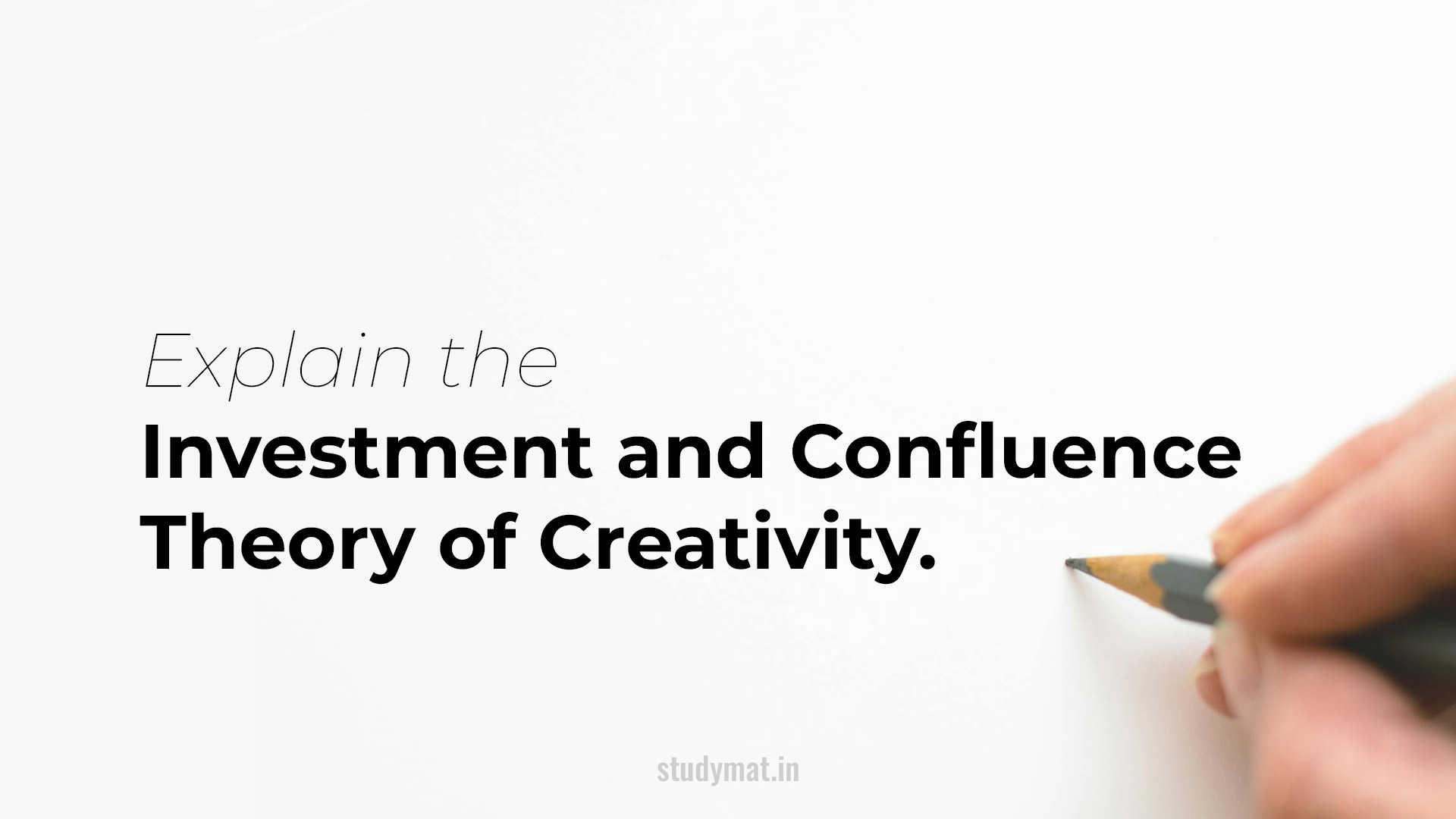In this article, we will Discuss the Meaning and Aspects of Creativity. Explain the Investment and Confluence Theory of Creativity.
What is the Investment and Confluence Theory of Creativity?
Sternberg (2006) proposed the investment and confluence theory to understand creativity. According to this theory, creativity requires a combination of six resources: intellectual abilities, knowledge, thinking styles, personality, motivation, and environment. Decision-making regarding resource utilization often plays a crucial role in individual differences.
Intellectual Skills:
Three crucial intellectual skills include (i) Synthetic Skill: seeing problems differently, (ii) Analytic Skill: recognizing valuable ideas, and (iii) Practical-Contextual Skill: persuading others of idea value. Their confluence is essential for creative thinking. For instance, using analytic skills alone leads to critical, but not creative, thinking.
Knowledge:
Knowledge is essential for advancing a field, but excessive knowledge may limit creativity by fostering a closed perspective.
Thinking Styles:
Thinking styles are preferences in utilizing skills. A legislative style, favoring new ways of thinking, is particularly important for creativity. Both global and local thinking abilities are beneficial for recognizing important questions.
Personality:
Certain personality attributes, like overcoming obstacles, risk-taking, ambiguity tolerance, and self-efficacy, are crucial for creativity. Creative individuals often challenge conventional thinking and seek opposition.
Motivation:
Intrinsic, task-focused motivation is crucial for creativity. People rarely engage in truly creative work unless they are passionate about it and focus on the work itself rather than potential rewards.
Environment:
A supportive and rewarding environment is necessary for displaying creative ideas. Internal resources for creativity may remain untapped without environmental support.
Confluence:
- Creativity involves more than the sum of individual resource levels.
- Thresholds exist for some components, such as knowledge, below which creativity may not occur.
- Partial compensation can occur, where strength in one component offsets a weakness in another.
- Interactions between components, like intelligence and motivation, can enhance creativity multiplicatively.
FAQ:
- What is the Investment Theory of Sternberg?
- Discuss Investment and Confluence Theory of Creativity example.
Follow Us:
If you like this article, you can Follow us on Facebook.
Also, you can Join our Official Facebook Group for QnA Sessions and Discussions with the worldwide IGNOU community

